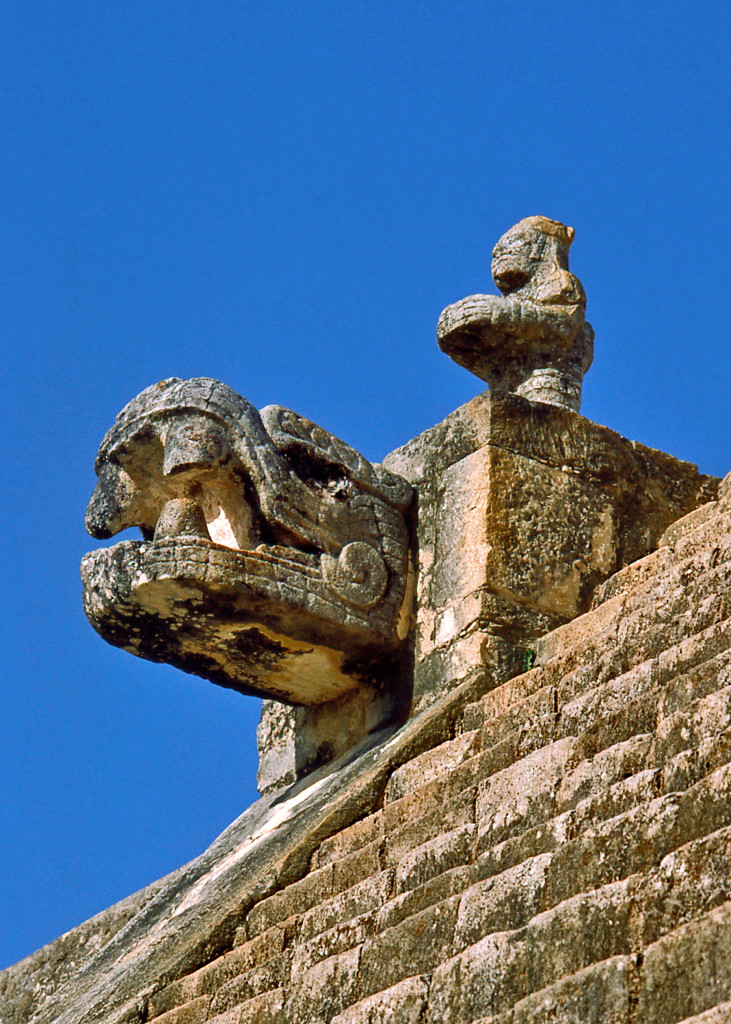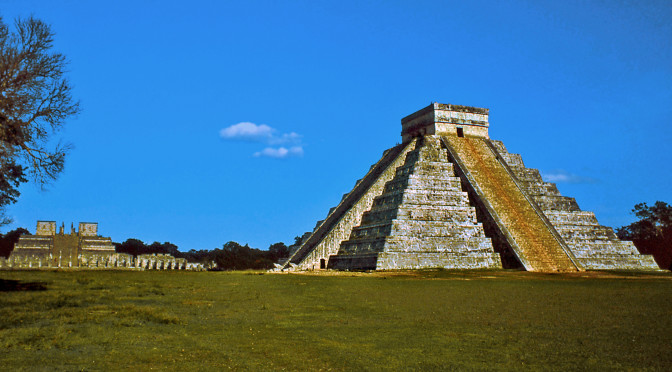During the Late Classic period Maya society was undergoing significant changes and becoming increasingly militaristic. In 918 CE the Itzas, a Maya-Toltec ethnic group, conquered northern Yucatan. These warriors introduced new elements from central Mexico into Maya culture. The circular shape of the observatory known as El Caracol derives from central Mexican temples dedicated to Ehecatl, god of the winds. This unusual structure consists of two concentric corridors and a spiral staircase which leads to a room with window slits oriented to various astronomical alignments. The Maya were superb astronomers and mathemati-cians who independently developed the concept of zero, performing advanced calculations and devising an accurate calendar spanning millennia. Maya priests observed celestial cycles of the sun, moon, planets and stars to predict future events and determine propitious times for ceremonies and important endeavors.
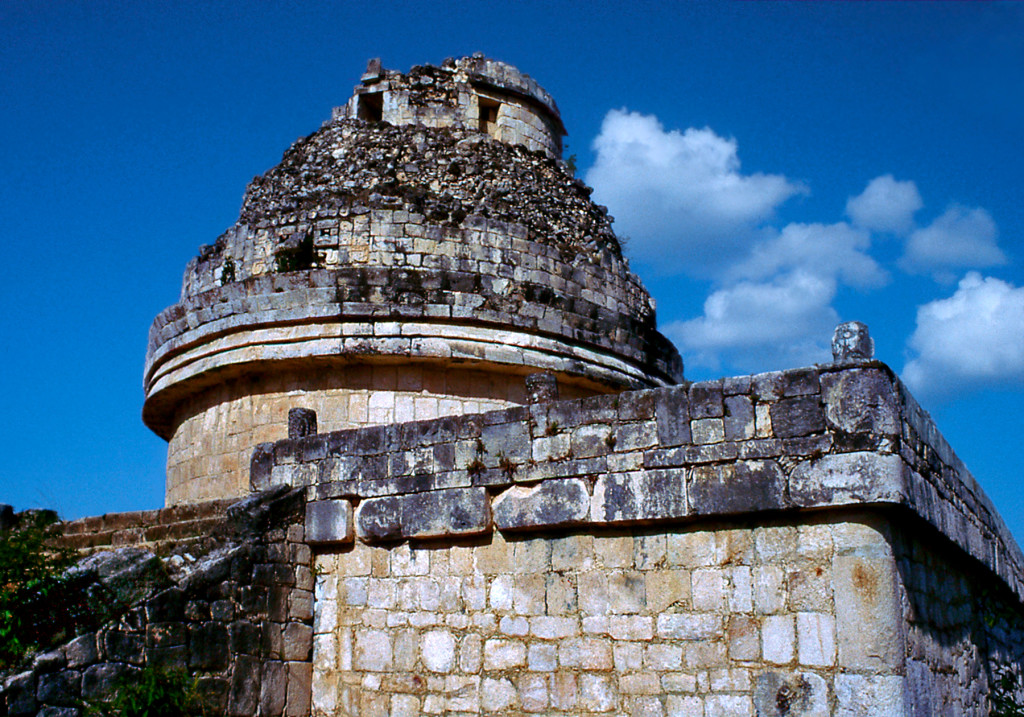
The layout of Chichen-Itza also breaks with old traditions. Buildings are no longer grouped together to form quadrangles or an acropolis, but instead stand isolated in the middle of great plazas. The pyramid of El Castillo commands the central plaza with its stepped profile of alternating “tablero” (flat planes) and “talud” (sloping sides). Its design is a representation in stone of the Maya calendar system.
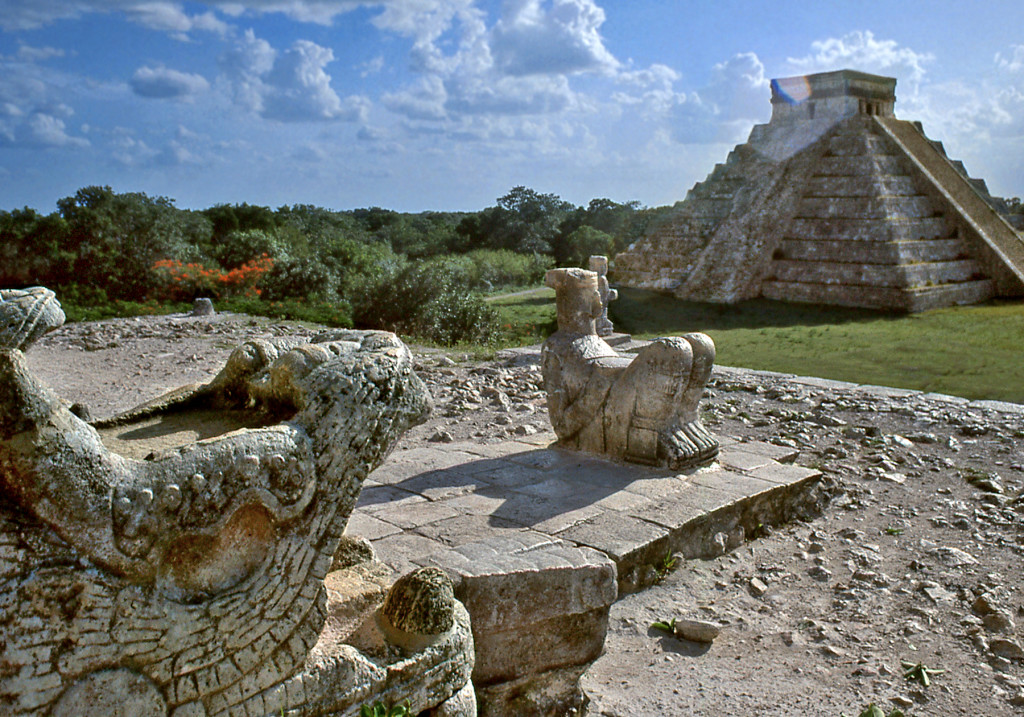
Four stairways ascend to the summit and the 91 steps on each side added to the top platform equal the 365 days of the year. The 9 levels of the pyramid are divided by the stairs into 18 sections, the number of months in the Maya year. The 52 sections of tablero correspond to the number of years in a full cycle of their Calendar Round. The Maya believed in the cyclical nature of time, and this 52 year cycle held special significance for them. The ending of a cycle was an ominous time which could herald the destruction of the world or its renewal, and the dawn of each new cycle was greeted with bonfires and festivities.

El Castillo was also designed to produce an astonishing light and shadow display during the spring and autumn equinoxes, as the light of the setting sun slithers down the main stairway, from the temple at the top to the serpent heads at the base, reenacting the descent of Kukulcan from heaven to earth. Kukulcan was the name given by the Maya of Yucatan to Quetzalcoatl the feathered serpent. This bene-volent deity who brought mankind the arts of civilization was widely worshipped throughout Mesoamerica.
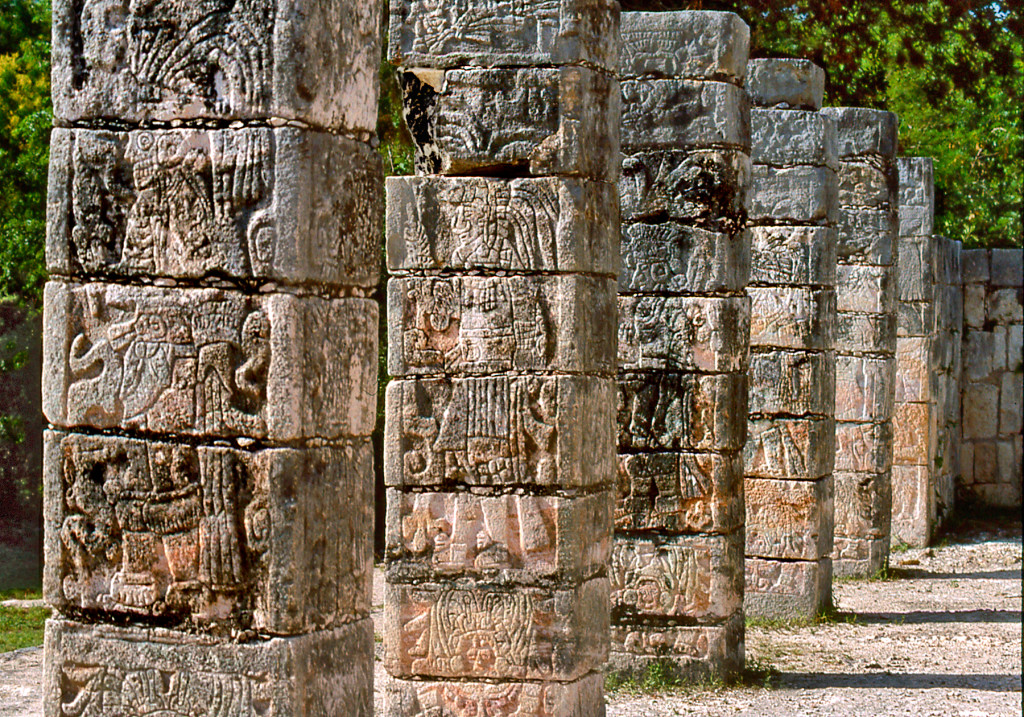
The Temple of the Warriors has open pillared halls decorated with reliefs of warriors in Toltec-Mexican attire. Two massive columns in the shape of feathered serpents flank the entrance and the reclining figure of a Chac-mool lies before the sanctuary. This sculpture of Mexican origin is thought to have figured in the sacrificial rituals as a receptacle for human hearts. Although later carried to gory extremes by the Aztecs as a ruthless tool of conquest, the shedding of human blood, as the most precious gift which could be offered to propitiate the gods, was a deeply ingrained belief in ancient Mesoamerica.
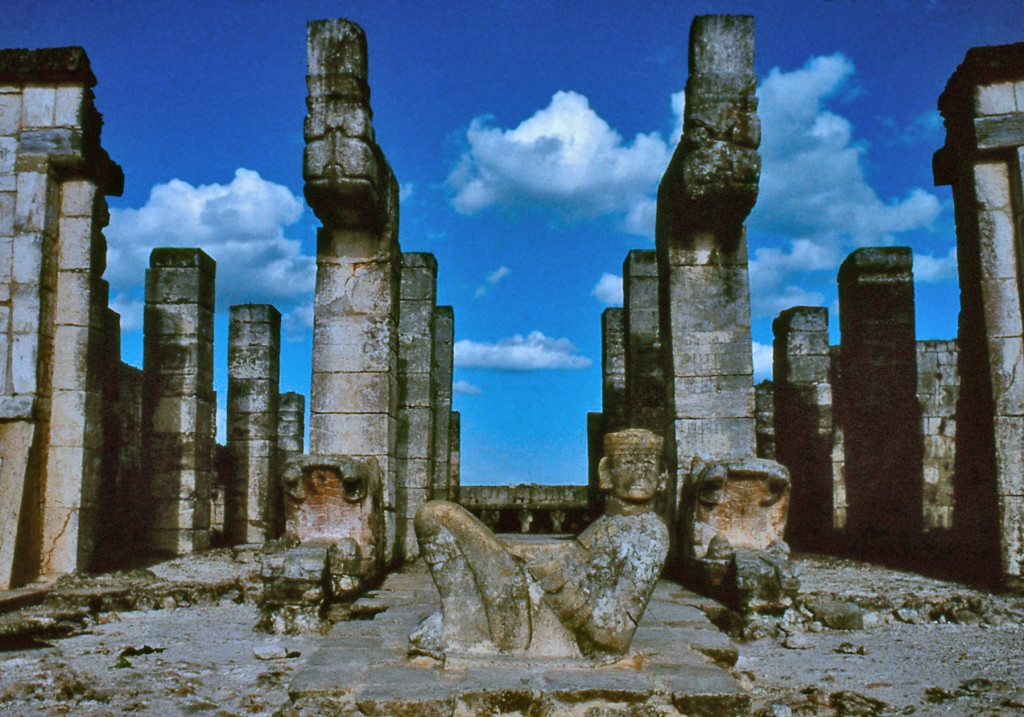
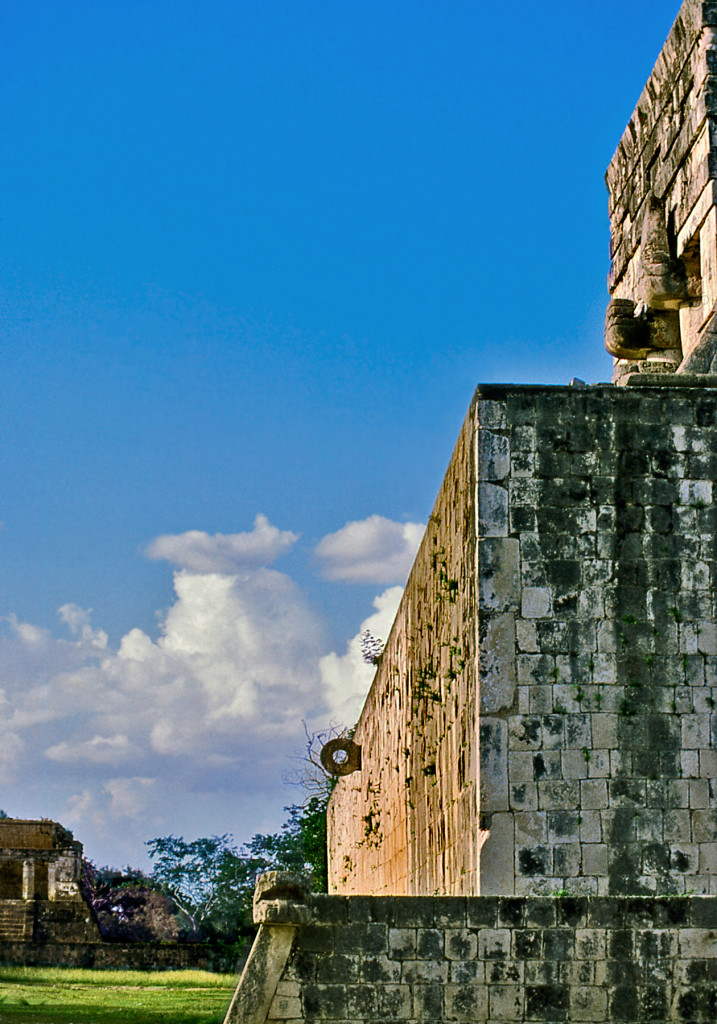
The impressive ball court at Chichen-Itza, measuring 550 ft. in length, is the largest in Mesoamerica. A sculptural relief on its walls depicts the sacrifice by decapitation of a player in the finale of the spectacle which played out there.
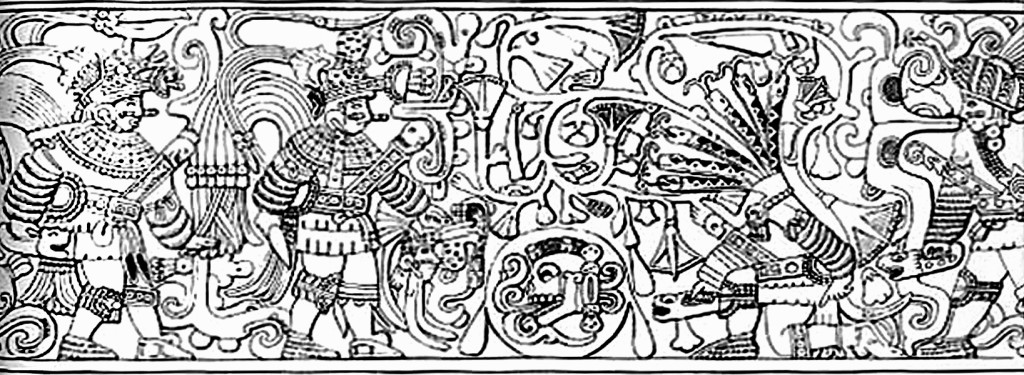
Players wearing padded suits could not use their hands or feet to hit the solid rubber ball. More than a mere sporting event, the ritual nature of the ball game can be symbolically interpreted as a match between the cosmic forces of light and darkness. The sun (represented by the ball) made a perilous journey through the dark underworld of night (represented by the court) to be reborn victorious with the dawn. The Maya believed that the blood of sacrificed players contributed to the regeneration of the world.
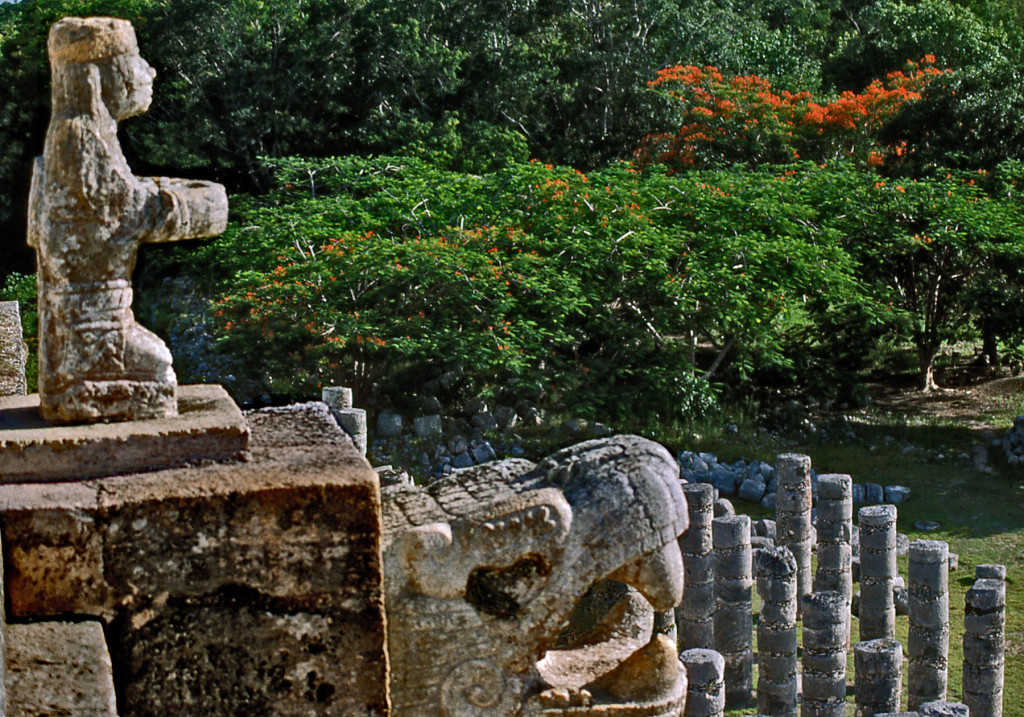
The Maya were a cultured people, but they were also fierce warriors whose bloody rituals seem horrifying to our modern mindset. Yet, the Maya created one of the most vibrant and long lasting cultures of the Americas. Their impressive architectural achievements are the embodiment in stone of a great civilization, offering insights into a vanished world.
